
Director, Book Publishing, Abe Ogden; Managing Editor, Greg Guthrie; Acquisitions Editor, Victor Van Beuren; Editor, Rebekah Renshaw; Production Manager, Melissa Sprott; Composition, ADA; Cover Design, Koncept, Inc.; Printer, Thomson-Shore, Inc.
2012 by the American Diabetes Association, Inc. All Rights Reserved. No part of this publication may be reproduced or transmitted in any form or by any means, electronic or mechanical, including duplication, recording, or any information storage and retrieval system, without the prior written permission of the American Diabetes Association.
Printed in the United States of America
1 3 5 7 9 10 8 6 4 2
The suggestions and information contained in this publication are generally consistent with the Clinical Practice Recommendations and other policies of the American Diabetes Association, but they do not represent the policy or position of the Association or any of its boards or committees. Reasonable steps have been taken to ensure the accuracy of the information presented. However, the American Diabetes Association cannot ensure the safety or efficacy of any product or service described in this publication. Individuals are advised to consult a physician or other appropriate health care professional before undertaking any diet or exercise program or taking any medication referred to in this publication. Professionals must use and apply their own professional judgment, experience, and training and should not rely solely on the information contained in this publication before prescribing any diet, exercise, or medication. The American Diabetes Associationits officers, directors, employees, volunteers, and membersassumes no responsibility or liability for personal or other injury, loss, or damage that may result from the suggestions or information in this publication.
 The paper in this publication meets the requirements of the ANSI Standard Z39.48-1992 (permanence of paper).
The paper in this publication meets the requirements of the ANSI Standard Z39.48-1992 (permanence of paper).
ADA titles may be purchased for business or promotional use or for special sales. To purchase more than 50 copies of this book at a discount, or for custom editions of this book with your logo, contact the American Diabetes Association at the address below, at booksales@diabetes.org, or by calling 703-299-2046.
American Diabetes Association
1701 North Beauregard Street
Alexandria, Virginia 22311
DOI: 10.2337/9781580404983
Library of Congress Cataloging-in-Publication Data
Cryer, Philip E., 1940
Hypoglycemia in diabetes : pathophysiology, prevalence, and prevention / Philip E. Cryer. -- 2nd ed.
p. ; cm.
Includes bibliographical references and index.
ISBN 978-1-58040-498-3 (alk. paper)
I. American Diabetes Association. II. Title.
[DNLM: 1. Hypoglycemia--physiopathology. 2. Diabetes Complications. 3. Hypoglycemia--epidemiology. 4. Hypoglycemia--prevention & control. WK 880]
616.4'66--dc23
2012031895
eISBN: 978-1-58040-508-9
This book is dedicated to the research nurses, led for a quarter of a century by Carolyn E. Havlin-Cryer, RN, and the following research fellows:
Alan J. Garber, MD, PhD
William L. Clarke, MD
Alan B. Silverberg, MD
Steven A. Leveston, MD
Jack F. Tohmeh, MD
William E. Clutter, MD
Dennis A. Popp, MD
Ann M. Ginsberg, MD, PhD
Pierre Serusclat, MD
Thomas F. Tse, MD
Stephen G. Rosen, MD
Michael A. Berk, MD
Myrlene Staten, MD
David P. Hoelzer, MD
Natalie S. Schwartz, MD
Katherine R. Tuttle, MD
Karen M. Tordjman, MD
Stephen B. Liggett, MD
James C. Marker, PhD
Patrick J. Boyle, MD
Irl B. Hirsch, MD
Simon R. Heller, DM, FRCP
Brian V. Wiethop, MD
Samuel E. Dagogo-Jack, MB/BS
Dwight A. Towler, MD, PhD
Chatchalit Rattarasarn, MD
Annemarie Hvidberg, MD, PhD
Tarek Saleh, MD
Carmine G. Fanelli, MD
Deanna Paramore, MD
Fernando Ovalle, MD
Scott A. Segel, MD
Salomon Banarer, MD
Veronica P. McGregor, MD
Michael A. DeRosa, DO
Bharathi Raju, MD
Denise Teves, MD
Ana Maria Arbelez, MD
Suzanne M. Breckenridge, MD
Benjamin A. Cooperberg, MD
Ranjani P. Ramanathan, MD
Nadia Khoury, MD
These individuals did the bulk of our work.
CONTENTS
The Clinical Problem of Hypoglycemia in Diabetes
The Physiology of Glucose Counterregulation
The Pathophysiology of Glucose Counterregulation in Diabetes
The Risk Factors for Hypoglycemia in Diabetes
The Clinical Definition and Classification of Hypoglycemia in Diabetes
The Prevention and Treatment of Hypoglycemia in Diabetes
Perspective on Hypoglycemia in Diabetes
PREFACE TO THE SECOND EDITION
Diabetes mellitus is an increasingly common disease. It is estimated that the prevalence of diabetes will rise from 285 million people in the year 2010 to 438 million people worldwide by the year 2030 (International Diabetes Foundation, 2009) and that the total diabetes prevalence (diagnosed and undiagnosed cases) will increase from 14% in 2010 to 25%28% of the United States population by 2050 (Boyle et al. 2010). The common forms of the disease are type 1 diabetes mellitus, the result of absolute insulin deficiency from its clinical onset, and type 2 diabetes mellitus, the result of relative insulin deficiency in the setting of insulin resistance early in its course and absolute insulin deficiency later. Approximately 95% of affected people have type 2 diabetes.
Over time, diabetes can cause unique microvascular complicationsretinopathy, nephropathy, and neuropathyand a substantially increased risk for macrovascular atherosclerotic complicationsmyocardial infarction, cerebrovascular accidents, and peripheral vascular disease. These long-term complications are undoubtedly multifactorial in origin, but it is now well established, at least for microvascular disease, that hyperglycemia is one important factor. Maintenance of plasma glucose concentrations closer to the nondiabetic range prevents or delays microvascular complications in type 1 diabetes (Diabetes Control and Complications Trial Research Group [DCCT] 1993; Diabetes Control and Complications Trial/Epidemiology of Diabetes Interventions and Complications Research Group [DCCT/EDIC] 2000) and in type 2 diabetes (U.K. Prospective Diabetes Study Group [UKPDS] 1998a, 1998b). It may reduce macrovascular complications in type 1 diabetes (DCCT/EDIC 2005; Polak et al. 2011) and type 2 diabetes (Holman et al. 2008). Indeed, it is conceivable that maintenance of normal plasma glucose concentrations over a lifetime of diabetes would eliminate the microvascular complications (DCCT 1995) and reduce the risk of macrovascular disease substantially (Stettler et al. 2006).
Unfortunately, with current treatment regimens, it is not possible to maintain euglycemia over a lifetime of diabetes in the vast majority of people with diabetes because of the barrier of iatrogenic (treatment-induced) hypoglycemia (Cryer 1997, 2004, 2008, 2010, 2011a). Pending the prevention and cure of diabetes, maintenance of euglycemia without hypoglycemia will require new treatment methods that provide plasma glucoseregulated insulin replacement or secretion, i.e. closed-loop insulin replacement, transplantation of -cell containing tissue or expansion of -cell mass.
The biochemistry, physiology, and pathophysiology of intermediary metabolism, with a focus on glucoregulation and hypoglycemia, have been reviewed (Cryer 1997, 2001, 2004, 2008, 2010, 2011a), and the history of hypoglycemia in the 20th century has been summarized (Cryer 1997). The impact of hypoglycemia was first documented in 1921 when a dog convulsed and then died after injection of extracted insulin; hypoglycemia was recognized to be a complication of insulin treatment of diabetes shortly thereafter (Bliss 1992).
Next page
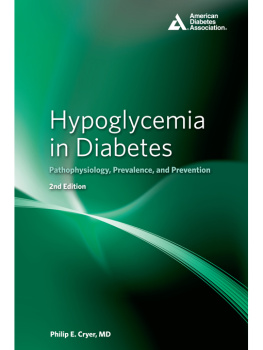
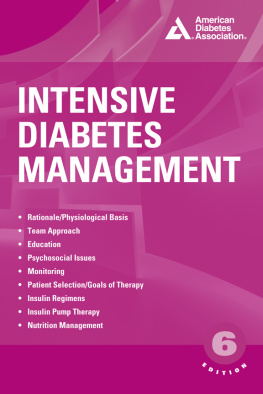
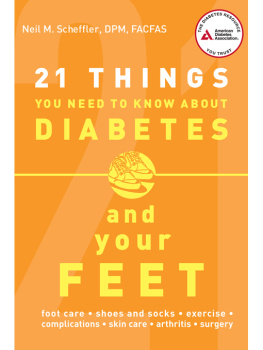

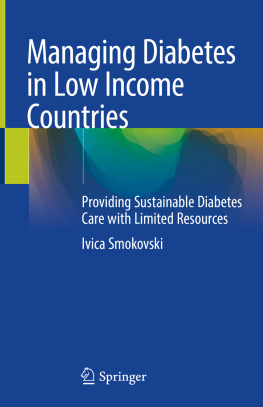


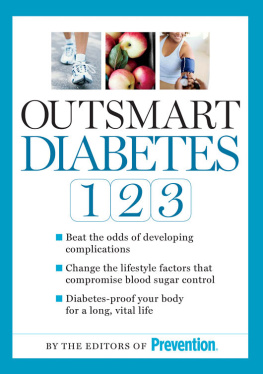


 The paper in this publication meets the requirements of the ANSI Standard Z39.48-1992 (permanence of paper).
The paper in this publication meets the requirements of the ANSI Standard Z39.48-1992 (permanence of paper).